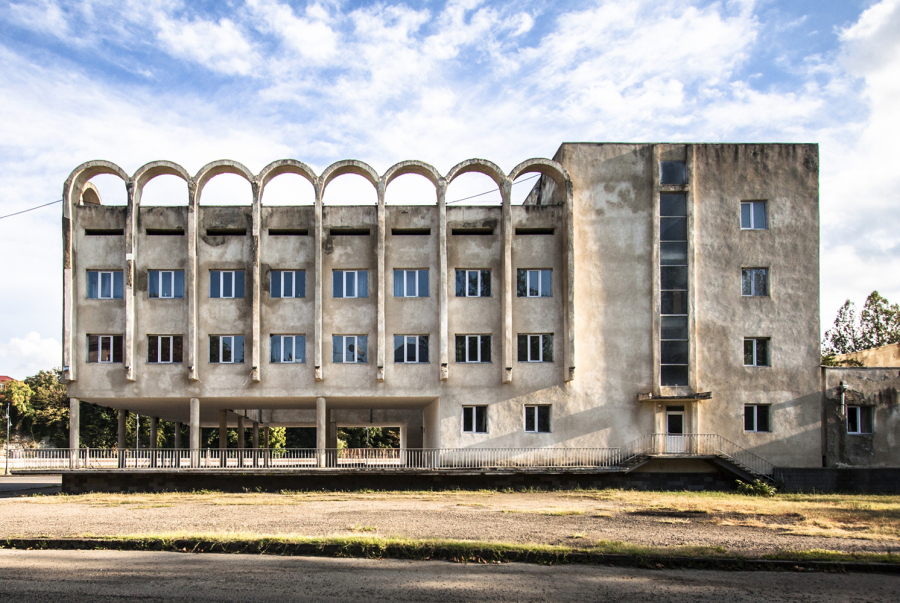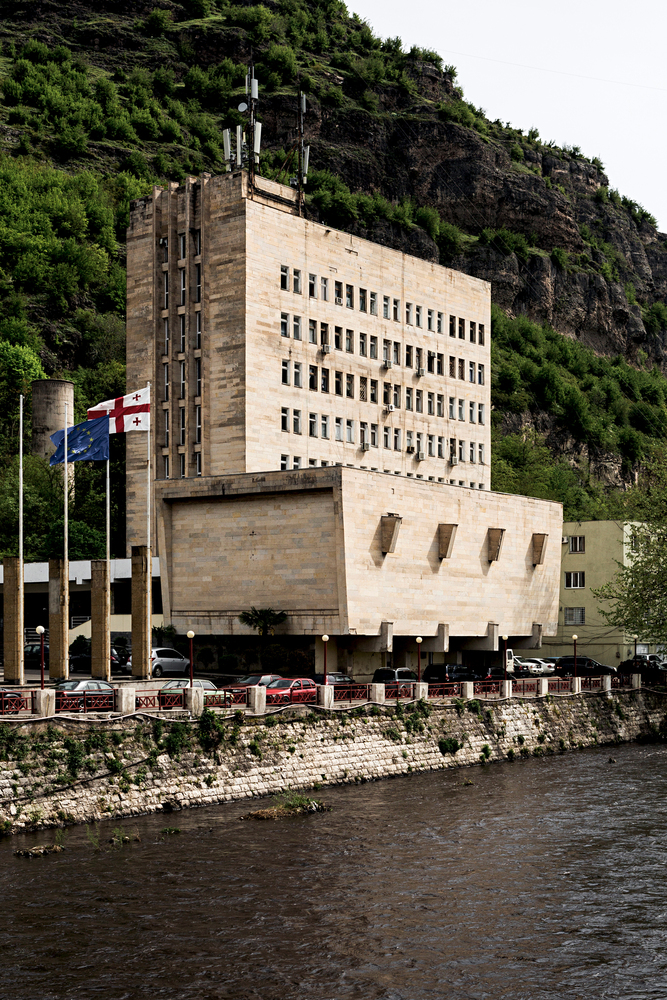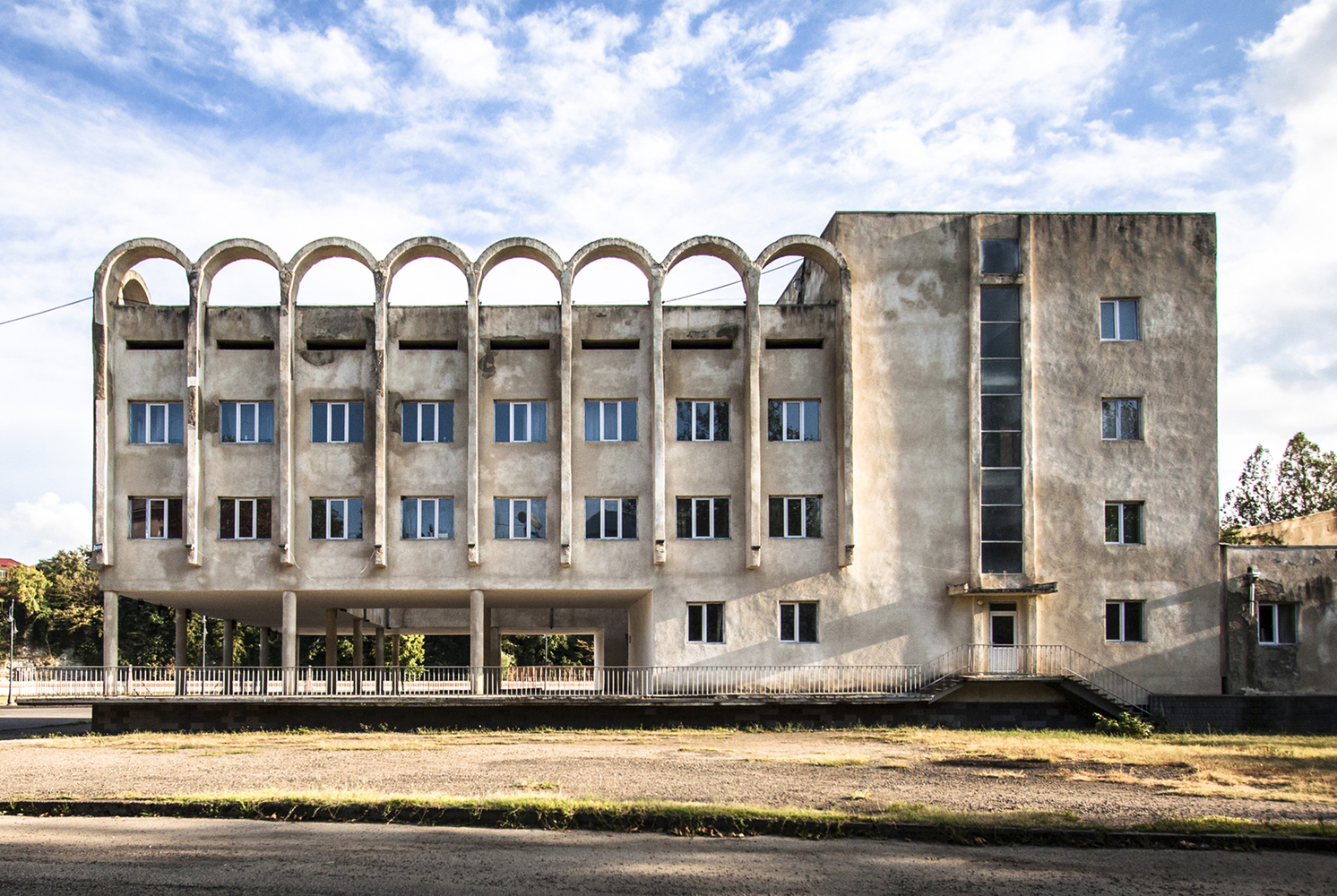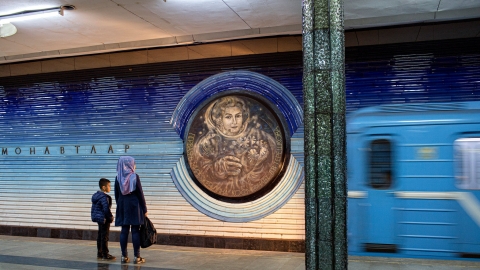Georgia is a former Soviet republic, the birthplace of Joseph Stalin. Dating back to the 1st century, the present-day capital of Georgia, Tbilisi, was an important point on the Eurasian Steppe trade route, a precursor to the Silk Road. The Mongol, Persian, and Ottoman Empires surrounded the area, and as Tbilisi was also a Christian outpost in the region, the city was repeatedly invaded by its Muslim neighbors. By the end of the 18th century, the capital was completely destroyed.
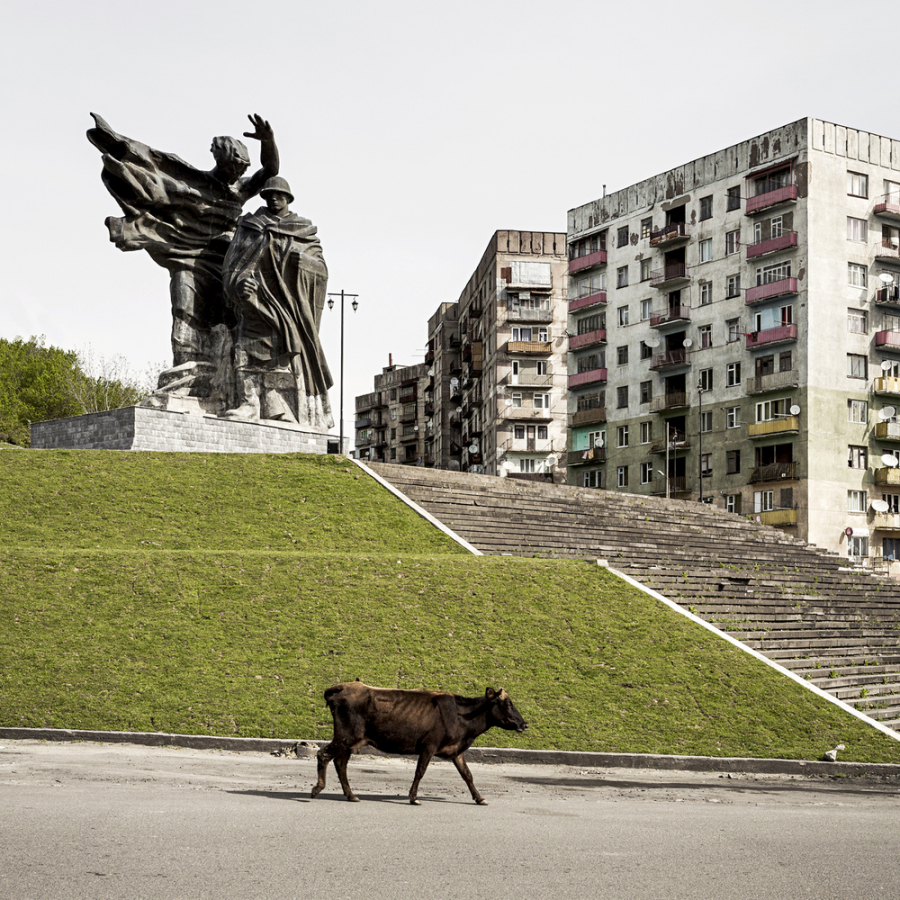
War Memorial and Soviet Housing Complex
In 1921, Russia severed Georgia's Muslim ties, declaring the country part of the Soviet Union. The city of Tbilisi was planned and built with Soviet symbols.
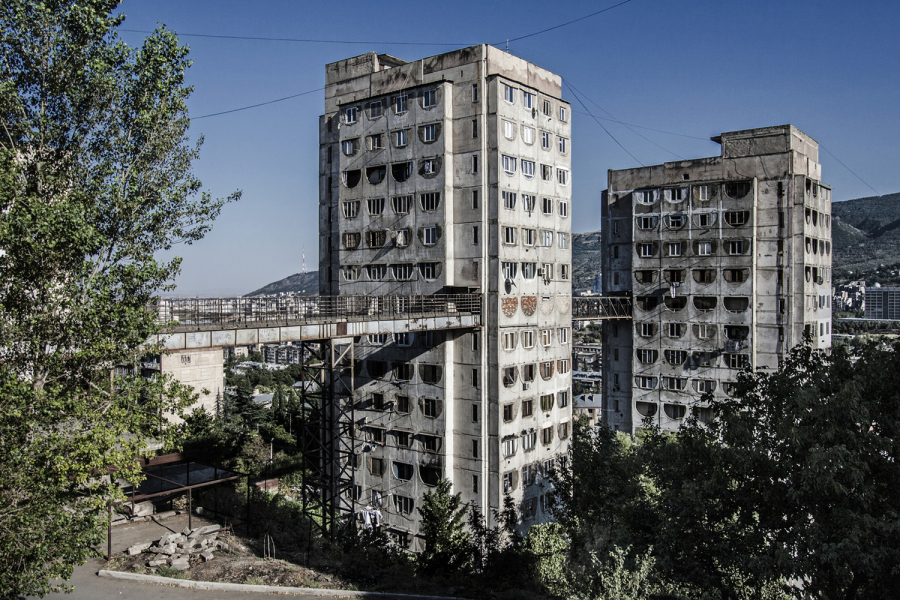
Group homes in Georgia
Although the Soviet Union collapsed in 1991, relics of the regime remained when Georgia became an independent nation.
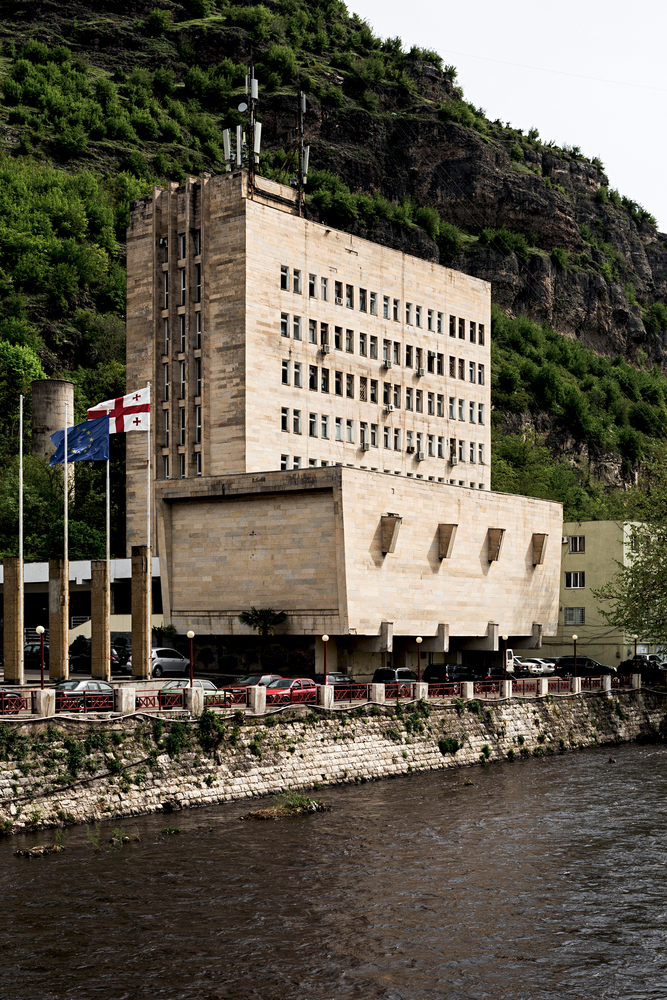
Chiatura Management Office
Photographers Conte and Perego traveled across Georgia to locate these brutalist and constructivist structures. Many of Georgia’s Soviet-era structures have been demolished. Those that remain have mostly been repurposed.

Aragveli Monument
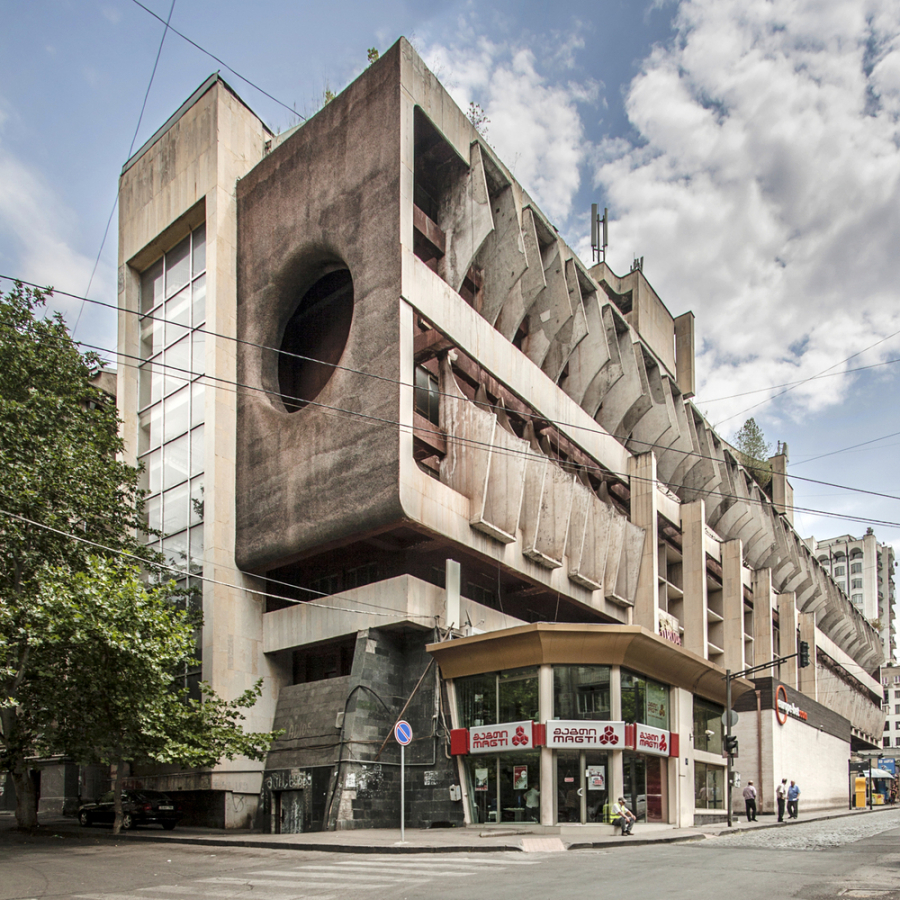
Technology Library

Georgian-Russian Friendship Monument (1983)
Conte and Perego used their images to draw attention to the expressionist style evident in Soviet architecture. This can be seen in the use of human forms in the Berdzenishvili statue in Marneuli and the Georgian-Russian Friendship Monument near the Georgian border. Human forms also appear in the murals of many public buildings, such as the Auditorium of the Industrial Technical College or the Archaeological Museum.
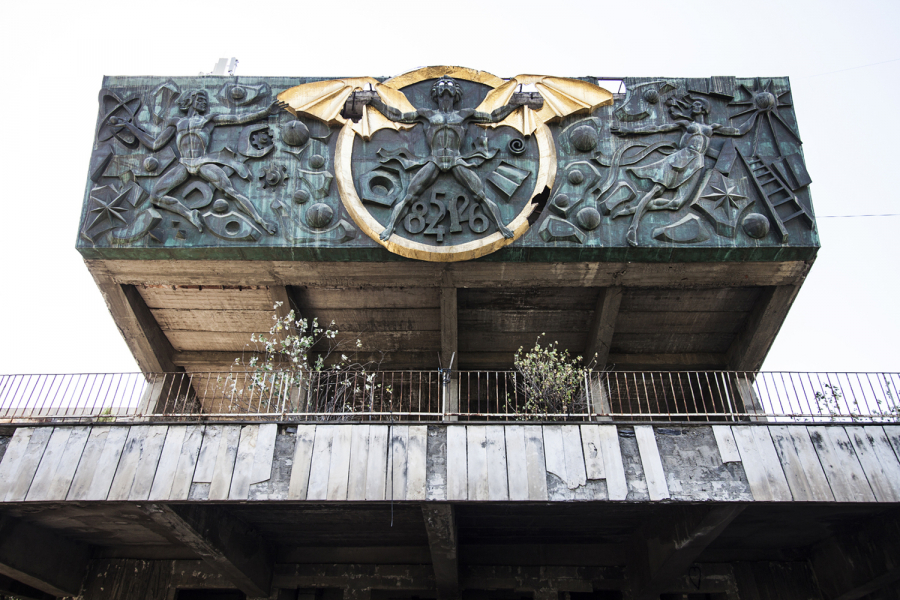
Auditorium of Industrial Technical College (1976)
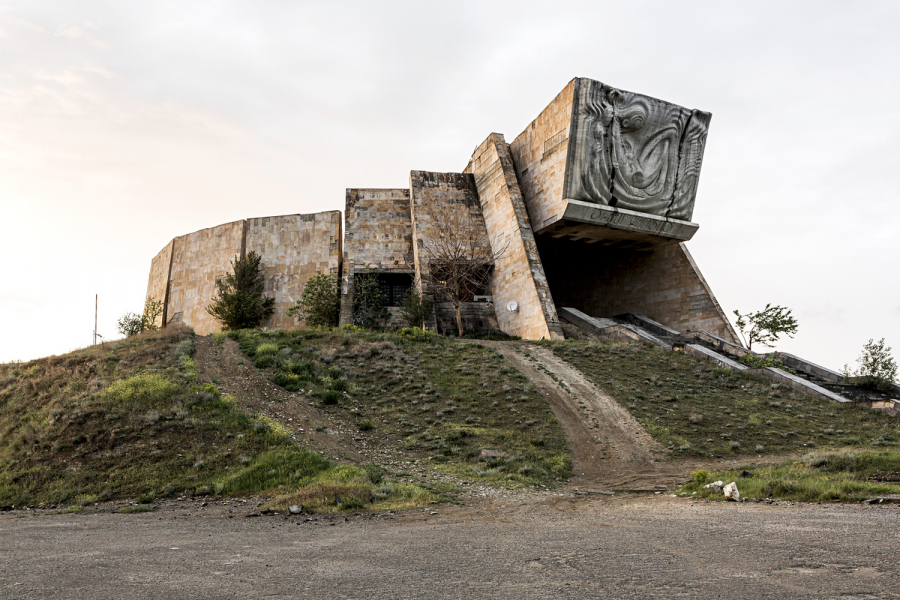
Archaeological Museum

The statue “And they shall grow”
The circular plan is common in many Georgian Soviet structures and the Palace of Ceremonies by architect Djorbenadze.
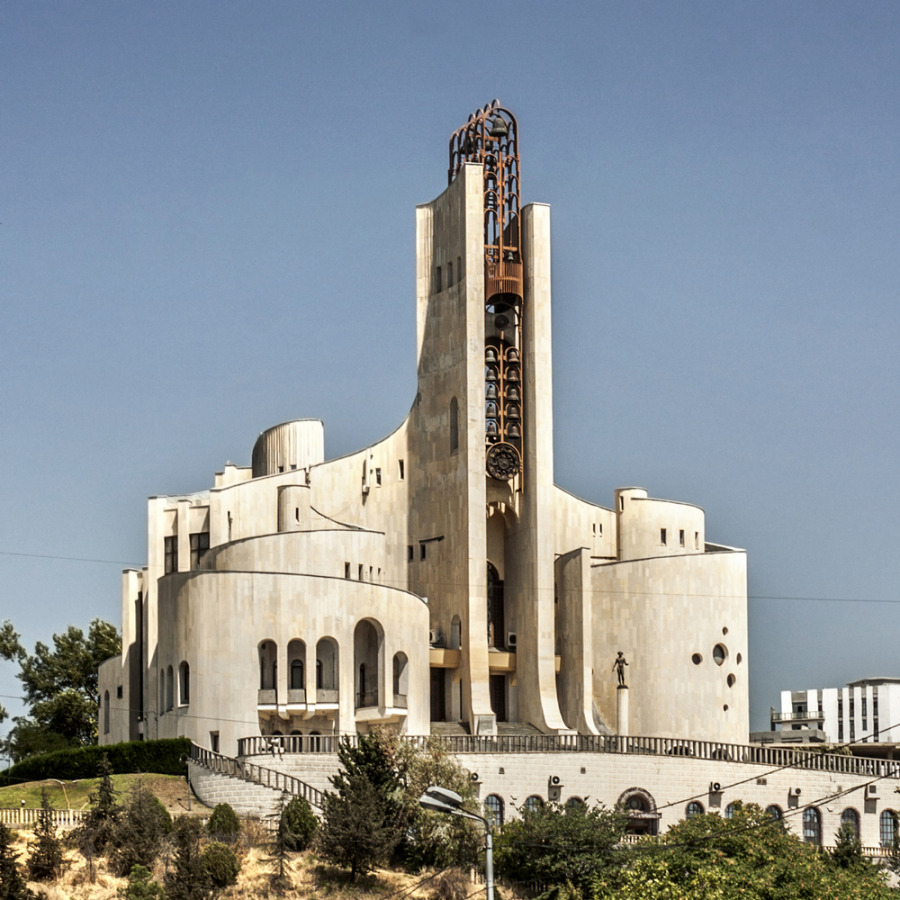
Palace of Ceremonies, designed by Djorbenadze
An important landmark of the Soviet Union is the Iberia Hotel. It was built in 1967 and later transformed by Georgian architects G. Chakhava and Z. Jalghania. The exterior of the building was completely changed and today it is a Radisson Blu hotel.

Ministry of National Highway Construction
The photographer couple was particularly interested in the Ministry of National Road Construction. This unique project incorporates traditional Georgian architectural elements. The structure has also been renovated and converted into the headquarters of the Bank of Georgia.
